Local naturalist, Chris Wren, introduces the Orange-tailed Mining Bee, one of the first bees to be observed at Gosforth Nature Reserve during spring.
While we have all been mainly confined to home, the natural world has been carrying on as normal and may even have benefitted from reduced human activity. It has been frustrating not to be able to visit Gosforth Nature Reserve but one small inhabitant will have thrived in our absence. It is almost always overlooked or even trodden on by visitors because it builds its nests in the southern boundary path of the reserve. This is the orange-tailed mining bee (Andrena haemorrhoa), one of dozens of UK species of mining bees.
Unusually this bee is named after the appearance of the female (more descriptive names in the animal world apply to the males). She is slightly smaller than a honey bee and has an orange thorax and orange tip of the abdomen. This one is one of the new generation emerging in spring.
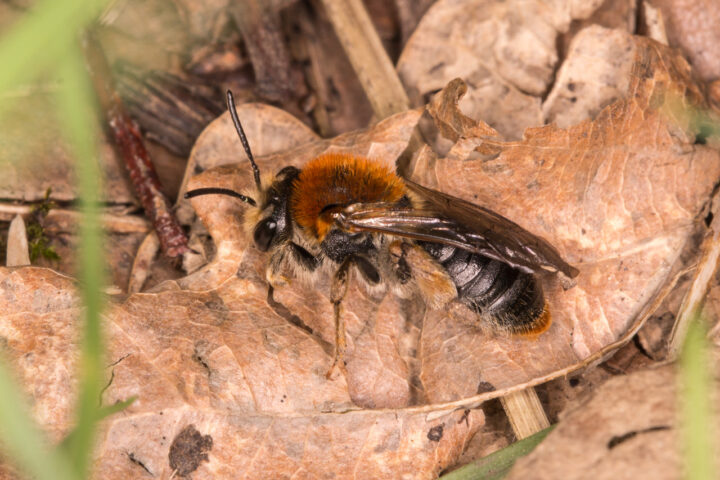
The male is smaller and thinner and is less easily identified as there are several similar-looking Andrena species.
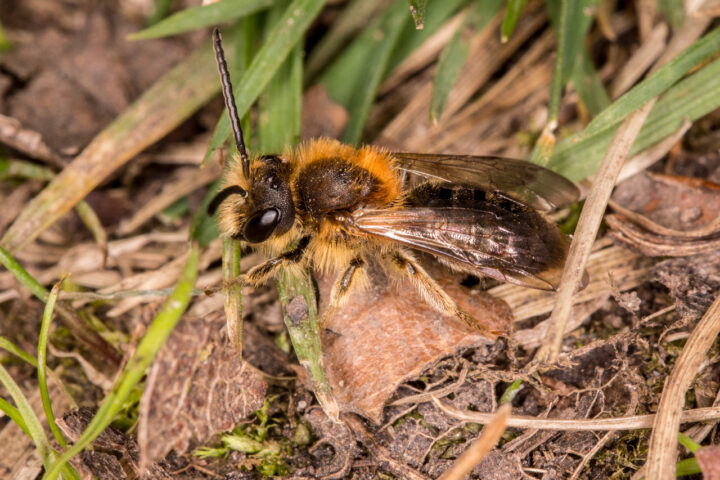
Males emerge first and spend their time flying around slowly just above the ground in search of emerging females. Mating occurs as soon as the female emerges.
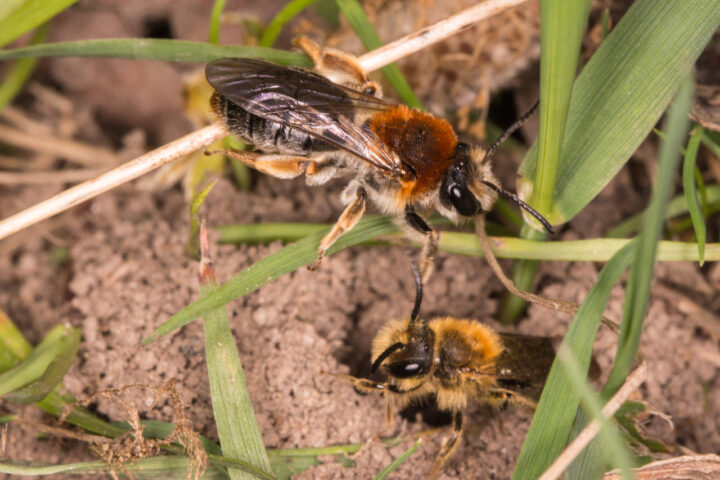
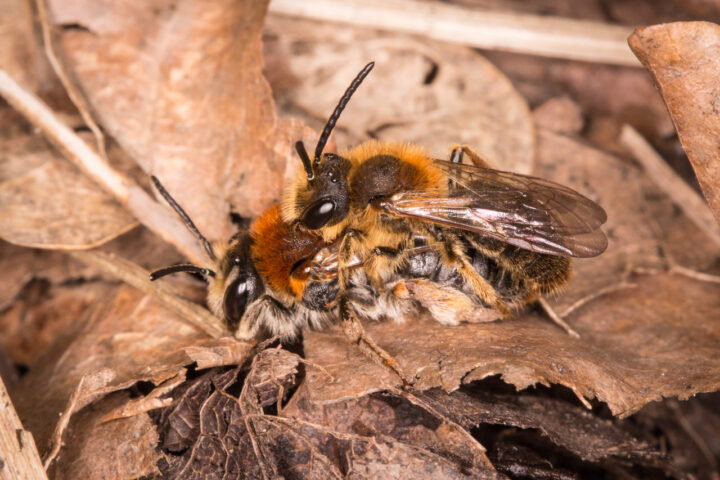
The female then digs a nest in the ground. This bee can cope with urban and heavily farmed environments and so is quite widespread. You may see them in your garden.
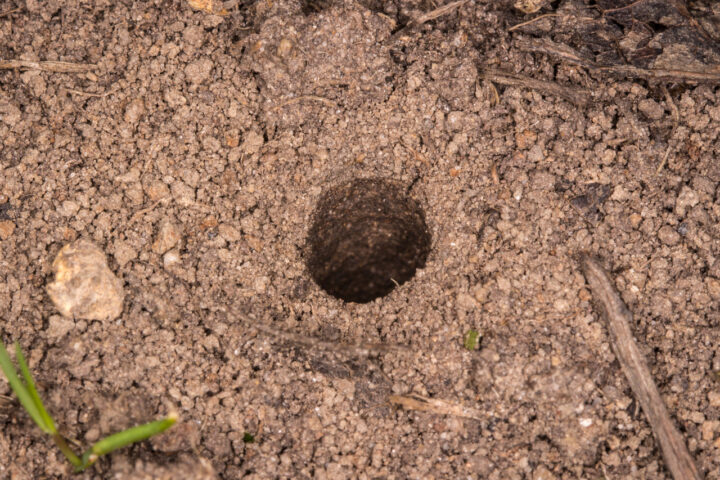
Although it is a solitary bee – each female has her own nest – several nests may be found close together in an aggregation, as in the reserve.
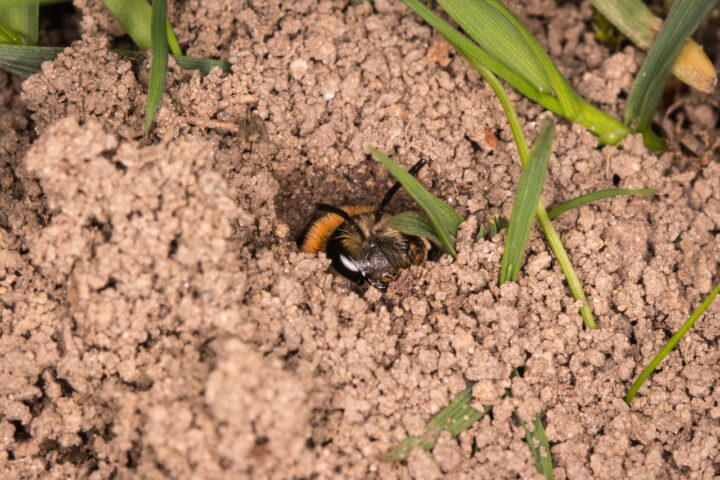
Each nest contains several cells, in each of which the female lays an egg and provisions it with pollen and nectar to feed the developing larva. She carries the pollen in a brush of hairs on each back leg called the scopa.
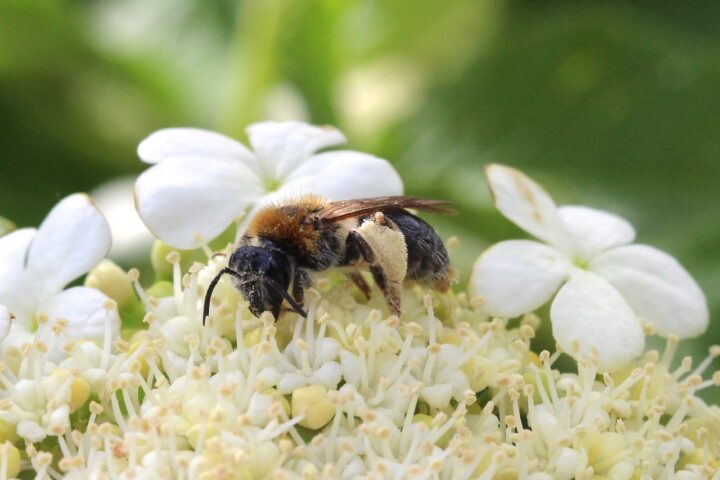
When all the work is done the nest is sealed and the adults die. Inside each cell the egg hatches, the larva eats the pollen and nectar mixture and grows, spins a cocoon and turns into a pupa and then into a new bee, ready to emerge next spring.
Andrena haemorrhoa has quite a long flight period for a solitary bee and can be found until mid-summer although these photos were taken at this time of year. Do look out for them when you have a chance and be sure not to walk on the nests.
By Christopher Wren, NHSN member and local naturalist
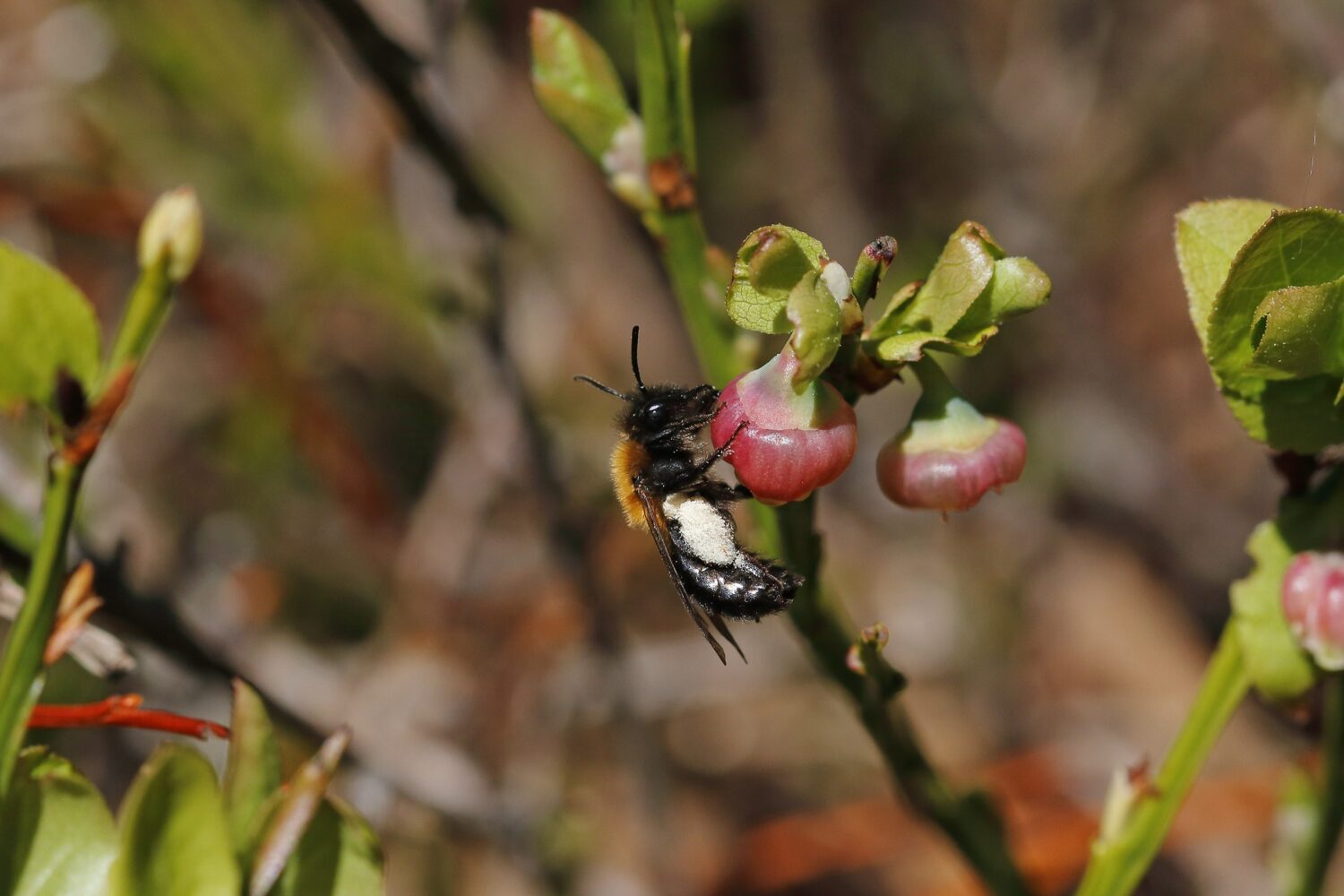
Join the North East Bee Hunt
Urban or rural, beginner or expert, we need your help to record eight distinctive bees across the North East this spring and summer.
Your records can add to our understanding of bees in the region and inform conservation and monitoring efforts.
Taking part is easy and every record counts, wherever you live in the region. Records of all bee species are encouraged.